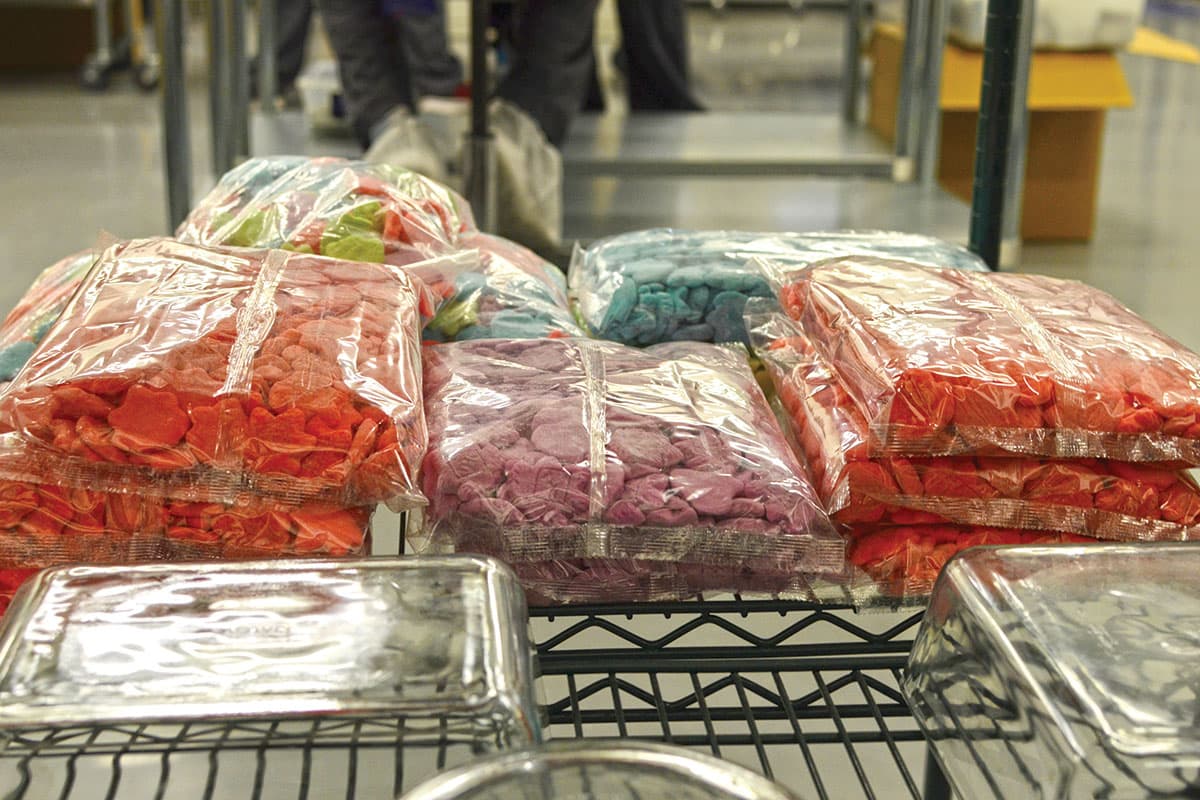 (Editor’s note: This story is part of a recurring series of commentaries from professionals connected to the cannabis industry. Chad Finkelstein is a partner at the law firm of Toronto-based Dale & Lessmann and chair of the firm’s cannabis group.)
(Editor’s note: This story is part of a recurring series of commentaries from professionals connected to the cannabis industry. Chad Finkelstein is a partner at the law firm of Toronto-based Dale & Lessmann and chair of the firm’s cannabis group.)
Third-party production, or white-label manufacturing of consumer products, is a long-established method of combining valuable brands and production capabilities.
Cannabis products are no different.
New brands created by new players, or recognizable brands associated with established players, will lead to different terms and royalty fees depending on the value of the brand being licensed for production.
White labeling can be particularly attractive to cannabis businesses seeking to leverage their manufacturing capabilities with known or emerging brands, or brand owners seeking to enter new channels of trade.
After all, with so many restrictions on the packaging, labeling and marketing of cannabis, these products face a unique challenge among consumer packaged goods to stand out and make a meaningful connection with potential purchasers.
Arriving at a royalty rate for a white-label agreement can be a challenging exercise. How do parties even arrive at an appropriate royalty fee at all?
Factors to consider
The following deal elements need to be considered in arriving at a royalty rate, including:
- Whether the licensed producer (LP) is granted exclusive production rights.
- The length of the term of the agreement and, correspondingly, the size of investment required by the LP.
- The LP’s own market presence and how badly the deal is needed by them in order to differentiate their products and offerings from those of competitors.
Those and other factors will help determine whether the royalty rate ends up on the higher or lower end of cannabis market ranges.
While a range has evolved as something of an industry standard for cannabis products, there are always exceptions driven by unique circumstances.
Generally speaking, royalty rates payable to cannabis brand houses are calculated as a percentage of product sales, rather than a fixed fee.
Fixed amounts are appropriate in certain relationships, such as when multiple product types and units are contemplated and carving out sales from one or the other is challenging.
Fixed fees might be advantageous from the perspective of certainty and predictability, but the brand owner has no upside participation.
Percentage-based fees
A number of methods have evolved in the nascent white-label cannabis production industry to calculate a royalty fee to brand houses calculated as a percentage of sales.
At its most fundamental, the cannabis producer will pay a percentage of its gross sales on the product received from the retail buyer or wholesaler.
To the extent that an industry standard can be said to have developed over the past two years, fees in the range of 8% to 18% are common.
But these royalties need not be fixed for the entire term.
Some agreements will provide for escalating scales based on satisfying certain sales targets. For example, the fee might start at 8% of top-line sales but can increase once annual sales exceed a specified minimum amount.
Some white-label deals with cannabis licensed producers use that same methodology but instead result in a royalty on the net sales – after deducting the producer’s costs and fees.
This can be a bit more nebulous since it will require a brand owner to have robust access and reporting rights to be able to validate all of the line items the LP has deducted.
To that end, parties may negotiate what items are appropriate to deduct before netting a royalty, such as discounts, rebates and third-party fees and commissions.
Assessing a brand’s perceived value
There is a number of criteria to consider when assessing the perceived value of the brand licensing and production opportunity in a way that makes sense for both parties.
Some brands inherently command a higher dollar value by virtue of their likely or actual recognition among consumers – think those associated with a celebrity or athlete, or well-known consumer packaged goods from another segment, such as food or beverages.
Perceived market size and competition should be considered as well.
Will the product brand have national appeal, or is it more regional or local? The larger the market, generally, the larger the royalty.
And who is bearing the responsibility of product development, sales and marketing?
Given the regulated nature of cannabis products, product development is inherently a collaborative exercise between brand owner and producer.
Sharing responsibilities
But is the onus shared equally, or is the brand owner largely seeking to commercialize its intellectual property and let the producer shoulder the responsibility of developing a quality product?
The production complexities, or lack thereof, will be relevant to bear in mind.
Will the producer be responsible for any, all or none of the marketing of the products as well as sales efforts to engage with retail stores?
Not every white-label deal arrangement is the same, and some brand houses assume complete responsibility for these activities, while others share them with the LP or defer to them almost entirely, relying on the strength of the brand being licensed to justify the royalty.
The party taking on more responsibility – and, accordingly, cost – is likely to be able to command a higher share of the product sales once royalties are accounted for.
Chad Finkelstein can be reached at cfinkelstein@dalelessmann.com and followed on Twitter at @ChadFinkelstein.
The previous installment of this series is available here.
To be considered for publication as a guest columnist, please submit your request here by filling out our form.







